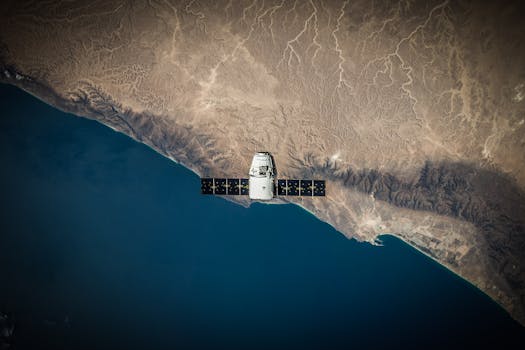
MEO Satellites: Revolutionizing Global Connectivity with Medium Earth Orbit Technology – MEO Satellites
MEO satellites, or Medium Earth Orbit satellites, are a type of satellite that operates in an orbit between 2,000 and 36,000 kilometers above the Earth’s surface. This unique orbit allows MEO satellites to provide faster and more reliable communication services compared to traditional Geostationary (GEO) satellites. In this article, we will explore the benefits and applications of MEO satellites and how they are revolutionizing global connectivity.
MEO satellites have several advantages over GEO satellites. One of the main benefits is their lower latency, which is the delay between the time data is sent and received. MEO satellites have a latency of around 20-30 milliseconds, compared to GEO satellites which have a latency of around 200-300 milliseconds. This makes MEO satellites ideal for applications that require real-time communication, such as video conferencing and online gaming.
History and Development of MEO Satellites
The concept of MEO satellites has been around for several decades, but it wasn’t until the 1990s that the first MEO satellite was launched. The first MEO satellite was the Indian satellite, INSAT-2, which was launched in 1991. Since then, several other countries have launched their own MEO satellites, including the United States, Russia, and China.
In recent years, there has been a resurgence of interest in MEO satellites, driven by the growing demand for global connectivity and the need for faster and more reliable communication services. Several companies, including SpaceX and OneWeb, are planning to launch large constellations of MEO satellites in the coming years, which will provide high-speed internet access to remote and underserved areas around the world.
Applications of MEO Satellites
MEO satellites have a wide range of applications, including telecommunications, navigation, and Earth observation. One of the main applications of MEO satellites is providing broadband internet access to remote and underserved areas. MEO satellites can offer speeds of up to 1 Gbps, which is comparable to fiber-optic internet.
MEO satellites are also used for navigation, such as the GPS system, which uses a constellation of MEO satellites to provide location information to GPS receivers on the ground. MEO satellites are also used for Earth observation, such as monitoring weather patterns, tracking natural disasters, and monitoring climate change.
Challenges and Future Directions
Despite the many benefits of MEO satellites, there are also several challenges that need to be addressed. One of the main challenges is the high cost of launching MEO satellites, which can be prohibitively expensive for many countries. Another challenge is the risk of interference from other satellites and terrestrial systems, which can affect the performance of MEO satellites.
In the future, we can expect to see the development of new technologies that will improve the performance and reduce the cost of MEO satellites. One of the most promising technologies is the use of advanced propulsion systems, such as electric propulsion, which can significantly reduce the cost of launching MEO satellites. Another area of research is the development of new materials and designs that can improve the efficiency and durability of MEO satellites.




